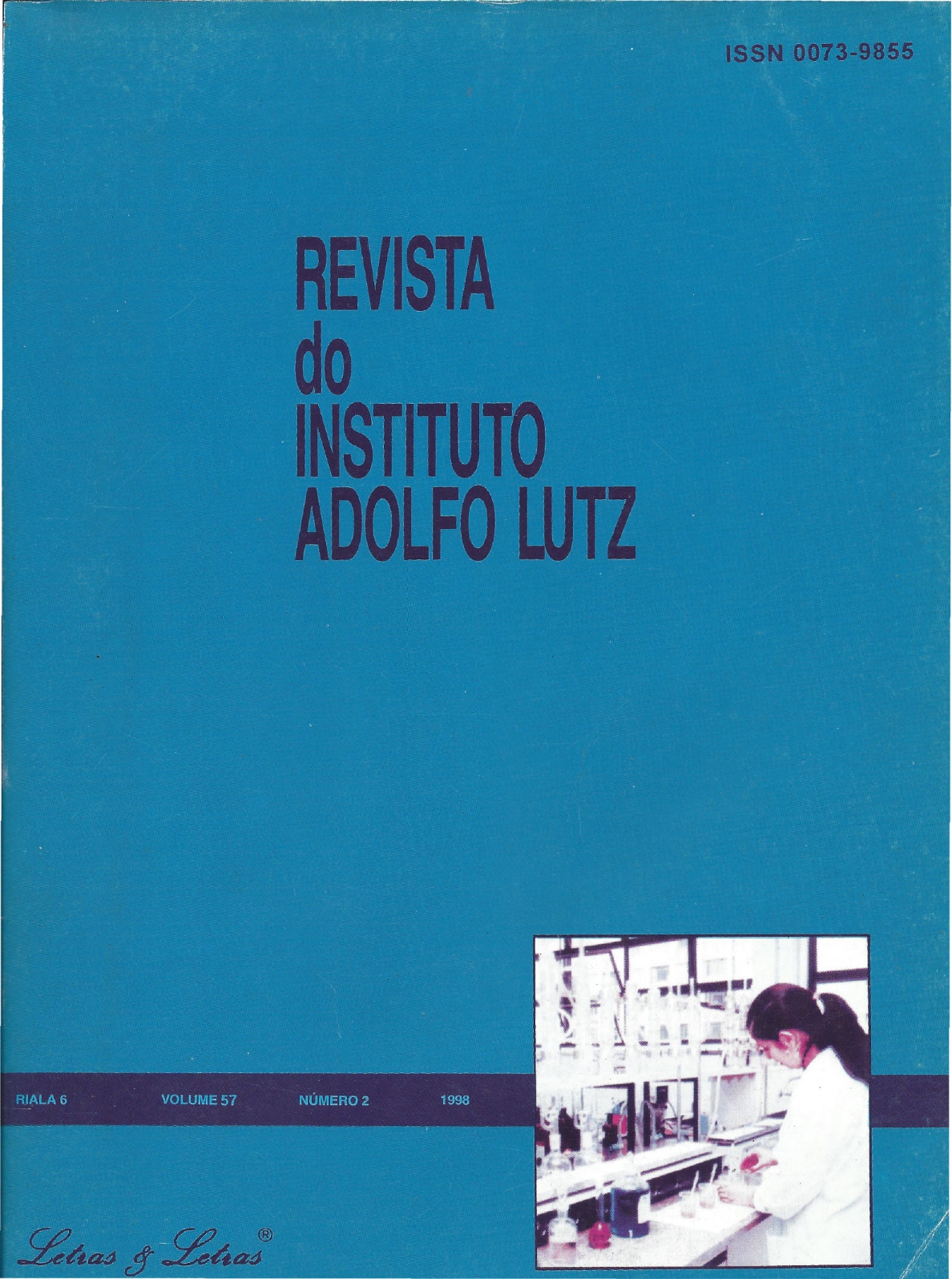Abstract
Palm oil known in BraziI as "dende oil" oil extracted from the fruit of the palm Elaeis guineensis Jacq that is a rich source of provitamin A, especially B-carotene. In the present study we compared the biopotency of this palm oil as a source of provitamin A in relation to synthetic B-carotene and evaluated the effect of thermal processing on the bioavaiIability of vitamin A in rats. Three groups of 6 animaIs each, previously deficient in vitamin A, were used. The animals received for 20 days diets with soybean oil enriched with synthetic B-carotene, paIm oil not submitted to heating or palm oil submitted to heating at 1000C for 20 minoTheoretically, ali diets contained 4 ER/g diet. Hepatic vitamin A con-
centration was similar in the control group and in the group receiving dende oil without previous heating (185.72 ± 25.40 and 150.17 ± 33.08 ug/g tissue, respectively). The group which received heat-processed dende oil showed a lower hepatic vitamin A value than the control group (144.80 ± 16.84 and 185.72 ± 25.40 ug/g tissue, respectively). The results demonstrate the feasibilty of palm oil as a provitamin A source even after thermal processing since the animaIs in the group receiving previously heated dende oil stored significant amounts of hepatic vitamin A.
Key words: B-carotene, fortification, palm oil, vegetable oil, "dende oil'' oil bioavailability, rats.
References
2. DESAI, I.D.; TAVARES, M.L.G.; DUTRA DE OLIVEIRA, B.S.; DUARTE, R.M.; DUTRA DE OLIVEIRA I.E .. Food habits and nutritional status of
agricultural migrant workers of Southern Brazil. Am. J. Clin. Nutr.,33: 702-714, 1980.
3. DESAI, I.D.; BHAGAVAN, H.; SALKEDLD, R.; DUTRA DE OLIVEIRA I.E .. Vitamin E content of crude and refined vegetable oils in Southern Brazil. J Food Comp, Anal., 1: 231-238,1988.
4. DUTRA DE OLIVEIRA, J.E.; DESAI, I.D., FÁVARO, R.M.D.; FERREIRA, I.F Effect of Heat treatment during cooking on the biological value of vitamin A fortified sybean oil in humano Internat. 1. Food Sei Nutr., 45:203-207,1994.
5. FÁVARO, R.M.D.; FERREIRA, 1.F.; DESAI, I.D.; DUTRA DE OLIVEIRA, I.E. Studies on fortification of refined soybean oil with all-trans retynil pal-
mitate in Brazil: stability during cooking and storage. J Food Comp Anal.,4: 237-244, 1991.
6. FÁVARO, R.M.D.; MIYASAKA, C.R.; DESAI, I.D.; DUTRA DE OLIVEIRA, I.E. Evaluation of the effect of heat treatment on the biological value of vitamin A fortified soybean oiI. Nutr. Res.,12: 13571363, 1992.
7. HATHCOCK, I.N. ET AL. Eva1uation of vitamin A toxicity. Am. J. Clin. Nutr. 52: 183-202, 1990.
8. HEYWOOD, R. PALMER A.K.; GREGSON R.L.; HUMMLER H. The toxicity of beta-carotene. Toxicology, 36: 91-100, 1985.
9. MATHEWS-ROTH, M.M. Plasma Concentrations of carotenoids after large doses of B-carotene. Am. J Clin. Nutr., 52: 500-501, 1990.
10. MAY, c.v Palm oil carotenoids. Food Nutr. Bull., 15(2): 130-137, 1994.
11. MUJIBUR RAHMAN, M.; WAHED, M.A.; AKBAR ALI, M. B-carotene losses during different methods of cooking green leafy vegetables in Bangladesh. J. Food Comp Anal., 3: 47-53, 1990.
12. OLSON, 1.A. A simple dual assay for vitamin A and carotenoids in human liver, Nutr. Rep. Intern., 19: 807-811, 1979.
13. RODRIGUEZ-AMAYA, D. Assessment of provitamin A content of foods - The Brazilian experience. In: Two decades of progress: Linking knowledge to action. Report of the XVI International Vitamin A Consultative Group Meeting, Thailand. 1994.
14. RUKIMINI, e. Red Palm oil to combat vitamin A deficiency in developing countries. Food Nutr. Bull.,15 (2): 126-129,1994.
15. TRIGUEIRO, I.N.S. & PENTEADO, M.V.e. Mudanças nos teores de alfa e beta caroteno em óleo de dendê durante o armazenamento a temperatura ambiente (26°C). B. CEPPA. ,11 (1): 1-10, 1993.
16. UNDERWOOD, B.; MCCLATCHEY, S. Global prevalence of vitamin A deficiency and its controI. In: Abstracts of the XVI International Vitamin A Consultative Group Meeting, Chiang Rai, Thailand. IVACG Secretariat, Washington, DC, 1994.
17. YADAV, S.K. & SEHGAL, S. Effect ofhome processing on ascorbic acid and B-carotene contend of spinach (Spinacia oleracia) and amaranth (Amaranthus tricolor) leaves. Plant Foods Hum. Nutr., 47: 125-131, 1995.

This work is licensed under a Creative Commons Attribution 4.0 International License.
Copyright (c) 1998 Instituto Adolfo Lutz Journal
